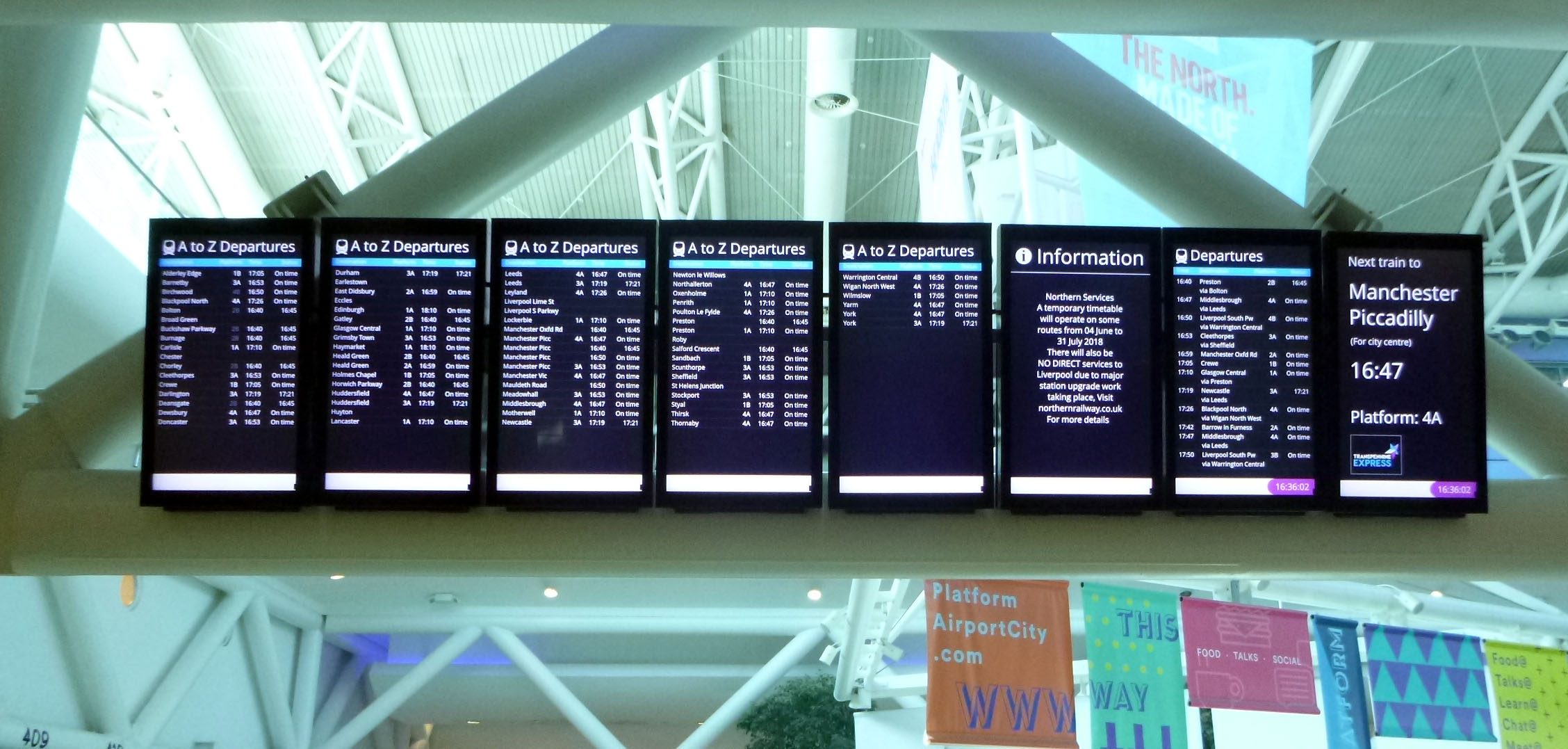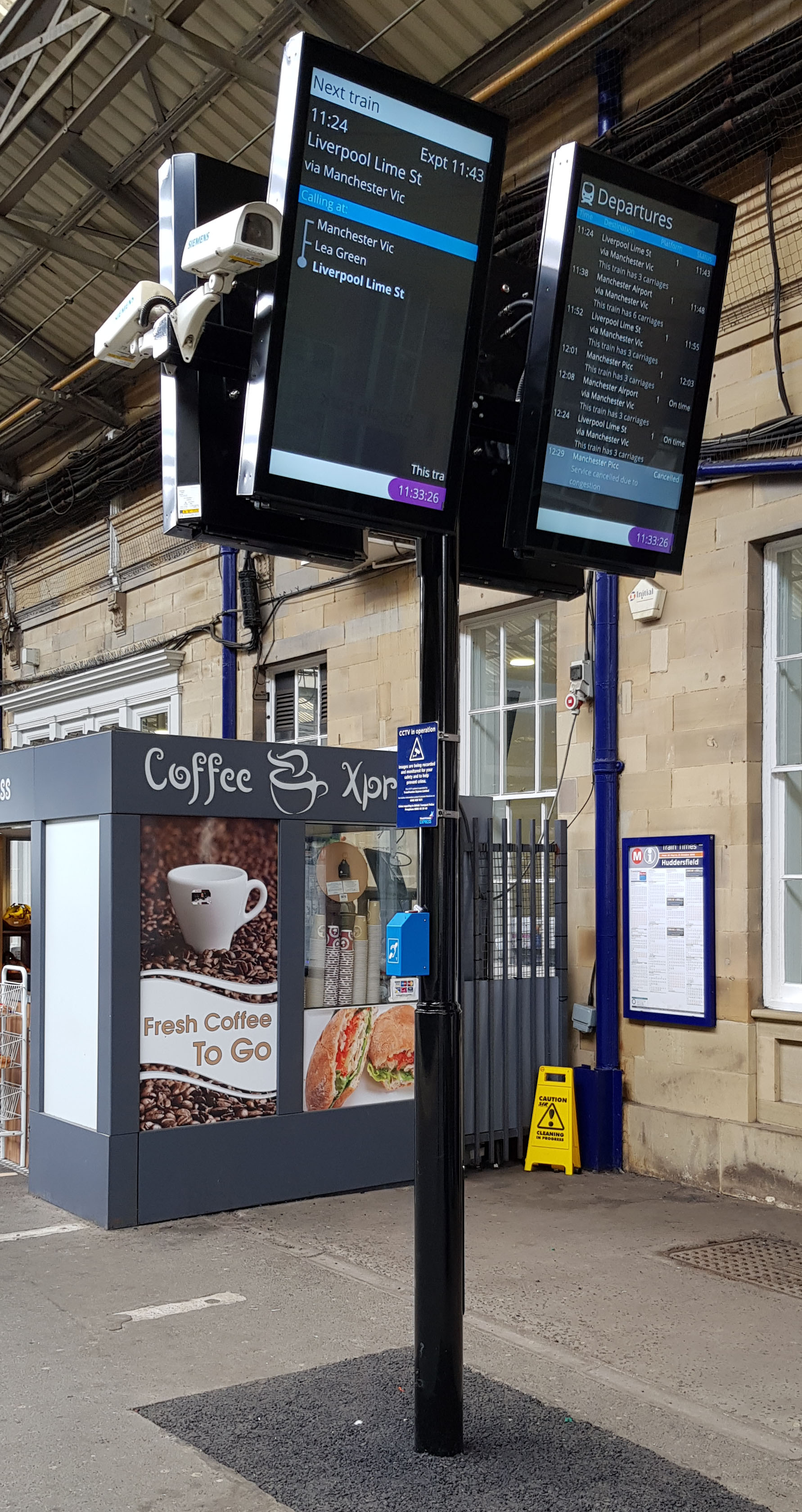Fitting support for station designers
Infotec has its own in-house team of mechanical engineers dedicated to helping architects and station planners, among others, to identify, design and create support structures for its displays.
An important part of selecting passenger information displays (PIDs) for any station is how they well they will “fit” - both in terms of matching with their environment and of being able to be placed and supported in the location identified.
Getting this right requires working in partnership with station designers and architects, as well as train operators, installers, Network Rail and, where appropriate, heritage officers.
Infotec has its own in-house team of mechanical engineers dedicated to helping identify, design and create support structures for its displays.
Once a client has expressed an interest in buying support structures from us, the first step is site visits by our engineers.
During these, engineers consider the display type and requirement for the location and before doing anything else ensure the suggested display position is compliant with Network Rail standards that determine the height at which a display must be placed and its distance from the platform edge.
Notes and measurements are taken to record details of existing steelwork and brackets, and to assess if the bracket being considered will work with the existing system/structure. Engineers think about the fixings to walls, floors or steelwork and make a judgment of the design in relation to strength calculations.
Heritage
Cabling is also very important too. Nearby lighting, access, overhead power lines and general location need to be reviewed during the visit. Line of sight also needs to be determined.
When heritage needs to be accounted for, support structures and installation methods that will not cause any damage to the existing building have to be identified.
Most of these factors are discussed with other partners involved in the visit, and guidance is given when needed. Usually engineers start to envisage the type of bracket needed while on location, which allows them to take the relevant dimensions to be able to produce a design.
The surroundings may also be recorded to allow the drawing of the display and proposed bracket in location, demonstrating its suitability.
With all these details gathered, and having taken position, existing or planned features of the building concerned and the nature of legacy fixtures into account, the engineering team creates concept drawings to be submitted to the customer for approval.
Sample materials
In addition to drawing designs, sample materials are sourced and 3D drawings of how the bracket will look are created. On occasions, visual mock-ups of what would be preferred are provided by the architects and the engineers’ job is then to devise ways of making it work.
In the case of the mainboard created for the recently launched Dundee station, Infotec produced a bespoke fixing arrangement that has connected to the client’s own steelwork. Based on experiences elsewhere, Infotec provided information to the designers to help with the Dundee design.

For the mainboard at Manchester Airport station (pictured above and top), Infotec was asked to design bracketry that could mount onto existing tubing and have an appearance that blended with existing steelwork. It also needed to be reversible and adjustable to allow it to clamp correctly.
For another recent job, at Huddersfield, a particular post presented specific requirements. The post being replaced had an attractive shaped round section that heritage officers requested be retained in the design. To add to the challenge, the post had none-standard sizes.


Our engineers took the sections away, including the post itself, and split it half to produce a two-cladding system that has made the new post (pictured above before and after cladding) look and feel like the original.
The support Infotec provides when it comes to the steelwork is more than just literal. With expert advice and experience, we help architects and planners to achieve the appearance and passenger practicalities they want.
Innovative third generation server launched
Infotec is excited to announce the arrival of the new IPH4, an innovative third generation server we have developed that offers advanced features and advantages over its IPH3 predecessors.
Full range for Cardiff Central
A full range of Infotec assets have been deployed in Cardiff to provide clear, detailed information on the main concourse, on every platform, in waiting areas, subways and outdoors.
How an OEM meets the challenge of a broken global supply chain
Clients enjoy significant benefits as a result of Infotec being an Original Equipment Manufacturer (OEM)
Elizabeth line congratulations
Millions of people will benefit from the innovative passenger information displays designed and manufactured for this project by Infotec.
A significant milestone
Infotec has now been operating for 30 years, maintaining a dedication to manufacturing excellence.